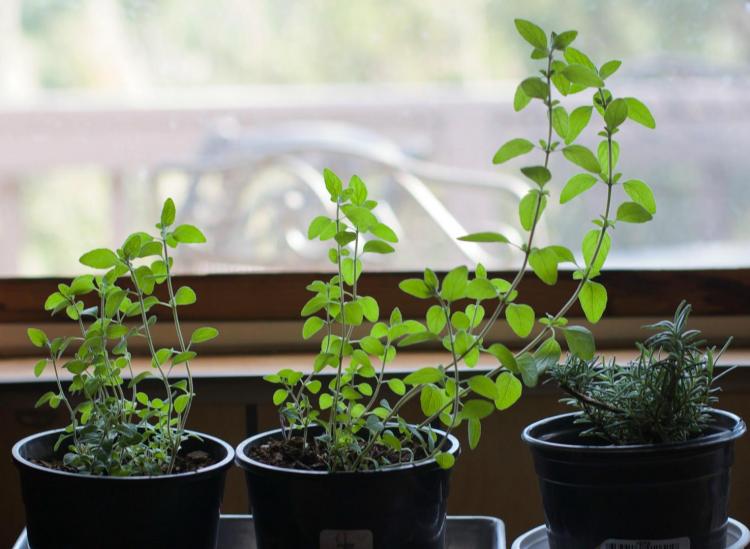You Can Grow These 6 Easy Herbs Without A Garden

Flickr/Alan Levine/CC BY
Let’s say you have a dream of a full-blown herb garden in your future, but right now all you have is a windowsill. You can still grow all the herbs you need for cooking, indoors. Sure, you could use dried herbs, but nothing beats the taste of fresh basil in a tomato sauce or vibrant mint leaves in a refreshing mojito. Some herbs just require well-drained soil and occasional watering, while others need to be perched next to a bright window. The only thing to remember with indoor plants is that in a shady spot, the water won’t evaporate quickly and overwatering will cause them wilt. Here are six easy herbs you can grow without a garden.
1. Basil
Growing basil indoors is so easy. Make some Margherita pizza or fresh pesto with a few little snips from your basil plant. Grow the basil in well-drained, nutrient-rich soil and stick it next to the window. The aroma will permeate throughout your house and add a pop of green color to the windowsill. A south-facing window is best. Give your plant sun and warmth and it’ll thank you with fresh, sweet basil all year round.
2. Chives
Chives are one of the easiest herbs to grow and they’ll give a confidence boost to anyone willing to try. With a light onion flavor, chives are perfect for chopping up and tossing on salads, soups, omelets, quiches and just about anything you can think of that needs a garnish or flavor boost. The whole chive plant is edible, from bulbs to blossoms to leaves. Place chives in a pot with fertile, well-drained soil. Try and pick a south-facing window that’ll receive around six hours of sunshine. Clip the chives about one or two inches above the soil.
3. Thyme
Thyme has an endless amount of uses in savory and sweet dishes. A clay pot would be your best bet since it’ll allow the thyme to dry out in between watering. It’ll also prevent wet roots from forming since thyme isn’t a fan of soggy conditions. The herb can tolerate indirect light, which makes it perfect for the kitchen. As long as it receives around six hours of daylight, just place the pot in a southern- or western-facing window and you’ll be good to go.
4. Mint
Mint can thrive just as much indoors as it can outdoors. You just need a container with proper drainage. Find a good potting mix, plant your mint, water it and place it in an area with indirect light. Remember to check the top of the soil and if it seems a little dry, get out your watering can. If you want your mint plant to look even all around, rotate it every three to four days.
5. Rosemary
The most common reason for a dried-out rosemary plant is a lack of sunlight. Rosemary can’t produce enough energy on its own to stay alive with a weak amount of sunlight. Give it full sun whether it’s inside or outside. Water the soil every two weeks, but make sure it’s dry first. Also, indoor air is drier than outdoor air so fill up a spray bottle and mist your rosemary plant once or twice a week. Make rosemary infused olive oil or add the fresh herb to a roasted chicken recipe. Bonus: the plant will act as a natural air freshener.
6. Sage
Place your sage plant near a sunny window. Since it’s a drought-tolerant herb, even when you think your sage isn’t doing well, just add a little water and it should come back to life. Sage can tolerate dry, indoor air pretty well, but it does need strong sunlight. Place it in a south-facing window for the best results.











